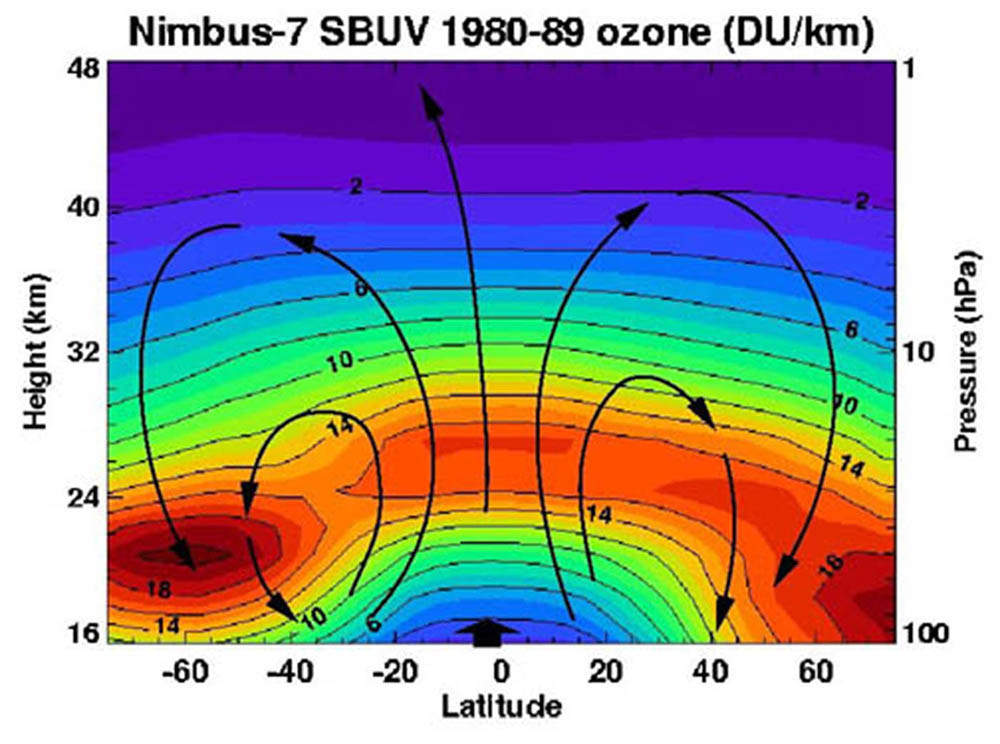Brewer-Dobson circulation

A cross-sectional view of the atmosphere from the south pole to the north pole showing the seasonally averaged ozone density in Dobson units. The black arrows show the Brewer-Dobson circulation, a model inferred to explain, among other things, why most ozone is found outside of the tropics while most ozone is produced above the tropics (Brewer, 1949) (Dobson, 1956). “The first part is rising tropical motion from the troposphere into the stratosphere. The second part is poleward transport in the stratosphere. The third part is descending motion in both the stratospheric middle and polar latitudes, though there are important differences. The middle latitude descending air is transported back into the troposphere, while the polar latitude descending air is transported into the polar lower stratosphere, where it accumulates” (Cordero et al., 2003). This circulation occurs in the winter hemisphere and is almost non-existent in the summer hemisphere. The lifting tropical circulation is thought to be quite slow, on the order of 20 to 30 meters per day. While the Brewer-Dobson circulation is related to Hadley circulation, it is thought to be driven primarily by wave motions in the extratropical stratosphere (Cordero et al., 2003). Figure from Cordero et al. (2003).